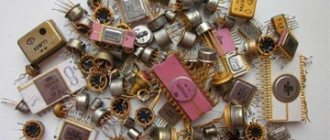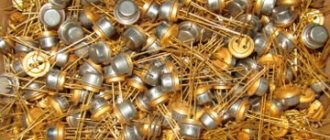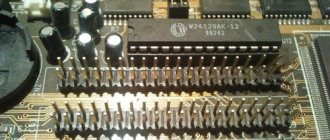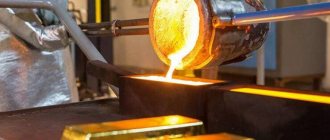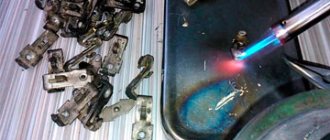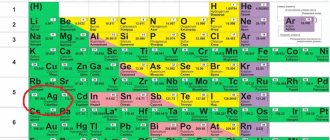In appearance, platinum is similar to silver, but in price it is much closer to gold.
And this is enough for platinum mining to develop.
The combination of the advantages of platinum, the demand for this metal and environmental requirements has led to the development of technologies for the secondary use of this metal.
platinum from waste , which is done not only by specialized companies, but also by home craftsmen.
Platinum is the most common metal of the platinum group, which also includes rhodium, palladium, iridium and others. All these metals have very similar properties, including high cost and unique qualities.
What is the value of the metal?
A beautiful and noble metal, platinum is used in jewelry and for minting coins. This is a banking and exchange metal, the bullion of which allows you to store and operate capital. Platinum is used much more widely in technology .
Application in technology is based on some
unique properties of platinum:
- the high inertness of this metal, immunity to the effects of many aggressive substances;
- excellent electrical conductivity and ability to conduct heat;
- the ability to act as a catalyst that initiates many important chemical processes.
Knowledge of the scope of platinum is also important in recycling. For this recycling strategy to be effective, it is good to properly plan and organize its collection and sorting . It is important to properly coordinate the extraction of platinum from secondary raw materials, because along with it, the part often contains other precious metals that also need to be extracted.
Here are several groups of products, materials and substances in which platinum is used. Such substances and products are an important source of returning platinum to economic circulation:
- automobile catalysts;
- radio components;
- elements of electrical equipment;
- parts made of pure platinum in devices and equipment - mesh, wire, etc.
The recovery of metals from recycled materials is more effective the larger volumes of such material are processed.
To extract platinum from each type of raw material, its own technologies have been developed .
Features of the technology
Let's look at the technology of refining precious metals using scrap gold as an example. The same technique can be used for refining silver, with some adjustments in the reagents. Consider the chemical properties of reagent substances when preparing for the procedure.
Amateur jewelers, despite the apparent simplicity of the event, should not be careless. The room in which refining (or any other manipulations with metals) will be carried out must be free from foreign and flammable objects, have a sufficiently spacious working area and the possibility of high-quality ventilation of the room (ideally, a powerful fume hood, since there are drafts from open windows may interfere with operation). If you are not the owner of a private home, then it is better to refrain from such experiments, because very toxic fumes can negatively affect the well-being of your neighbors if they get into the ventilation.
Also, a person working with aggressive chemicals and metals must take care of their own safety.
It is necessary to work in a fire-resistant apron and gloves, in comfortable clothing made of low-burning material that covers the entire body. It is advisable to cover your face with a respirator to avoid inhaling toxic fumes and accidental contact of an aggressive solution on your face.
You need to cover your eyes with glasses with eyecups, otherwise they will inevitably start to water, and this is dangerous when working with hazardous substances. It is advisable to cover your hair too, otherwise it may absorb reagent molecules.
To carry out refining, it is necessary to prepare zinc. It needs to be fused with scrap precious metal so that the acid reacts more actively with the gold molecules. It works approximately as follows: during the reaction, the acid dissolves all metals except gold, but to do this it needs to penetrate between the molecules of the alloy. Adding zinc to the mixture makes the alloy's chemical texture looser, allowing scrap to be cleaned more effectively. The resulting precipitate from this reaction can simply be washed with water.
Scrap gold is alloyed with zinc in a 1:1 ratio, and it is advisable to have a little more zinc in stock. To melt, the metal is first dried and calcined on a jewelry crucible on a stove. Crucibles are sold in jewelry stores and cost mere pennies, so it is better to purchase several for different manipulations.
It is important to use a jewelry crucible, and not a handy analogue - other dishes may not withstand high temperatures and burst.
Extraction from secondary raw materials
Knowledge of the peculiarities of the processes for extracting precious metals from secondary raw materials is important not only for direct technical execution. Understanding such technologies allows us to better organize the collection of suitable raw materials and anticipate the directions of development of these processes.
Very
conventionally, work on the extraction of platinum from secondary raw materials is divided into those carried out by enterprises that manufacture products using this metal, and those carried out by recycling organizations engaged only in the processing of third-party source materials.
Enterprises working with platinum operate their own or subcontracted waste disposal systems .
Specialized organizations are engaged not only in processing, but also in purchasing raw materials from various sources :
- purchasing secondary raw materials from enterprises;
- purchasing platinum in the form of scrap;
- purchasing platinum-containing products, for example, radio components.
One of the areas of work of recycling enterprises in purchasing raw materials is interaction with the population . Those interested in participating in recycling technologies can even extract platinum from waste and products themselves. Jewelers also work with platinum.
A little about the processing of concentrate platinum
Processing this type of mixture is simple compared to other methods. The thing is that in concentrated platinum there is a large amount of pure metal and a small amount of impurities. The main operations are dissolution and finishing. The grinding agent is dissolved in aqua regia, then the metal is precipitated using ammonium chloroplatinate (NH4)2[PtCl6] and residual elements (palladium, iridium, etc.) are removed. After the precipitate, the platinum is washed, treated with ammonia and dried.
Most of the methods are suitable for implementation at home, as they are simple and straightforward!
Equipment and reagents
For an enthusiast of self-recycling, it is important to have appropriate conditions for extracting precious metals:
- the presence of a workshop or yard for work using toxic materials and metal smelting operations;
- the possibility of safe disposal of toxic waste from recycling;
- the presence of a legal channel for the sale of the resulting precious metal.
Equipment, reagents and technologies for refining platinum are suitable, with minor modifications, for the recovery of all other platinum group metals. Slight differences in refining technology are used to separate these metals from mixtures.
Those interested in working on recovering platinum from recycled materials can start with a laboratory version of these technologies . After clarifying the features of such a process, it is possible to increase the volume of processed raw materials.
The main reagents for the platinum refining operation are nitric and hydrochloric acids , used for the production of “regia vodka” and in its pure form. For example, here are some other reagents you may need :
- ammonium chloride;
- sodium carbonate;
- formic acid.
The real need for these and many other reagents arises when the required technology is refined.
You will also need the simplest laboratory glassware of common types - glasses, spoons, porcelain and high-temperature crucibles, a pressure filtration device.
We must not forget about skin, respiratory and vision protection , which require protection used when working with toxic liquids and gases. Laboratory operations are performed in an equipped workshop or in the open air. Personal protection in the air remains the same as in a laboratory room.
Extraction of platinum from alloys
- Laboratory remains from experiments.
Platinum type black can be removed by treating a solution containing salt – H2[PtCl6]. This can be done using formic acid or sodium. The equation is as follows: 2[PtCl6] + 2HCOOH + 3Na2CO3 = Pt + 6NaCl + 5CO2 + 3H2O.
When the solution is processed, HCOOH is added to it, after which the condenser is brought to a boil and stirred. Next, Na2CO3 is added to the boiling mixture in portions. The result will be a sediment that will need to be collected using a chemical bag, rinsed under running water and dried. To prevent the product from oxidizing, acidified HCL can be added to it.
- Extraction of noble metal from ammonium chloroplatinate.
In this case, only spongy platinum can be obtained. The final product is a calcination reaction of ammonium chloroplatinate at temperatures above 600 degrees Celsius.
- Extraction from residues that are released when potassium ions are detected. To carry out the operation, you will need a container in which K was determined, a precipitate from K2[PtCl6] and a mixture of H2[PtCl6] are also needed. Mix everything, then add a large amount of NH4Cl
The sediments are also added together to a vessel filled with distilled water in a volume of 2 liters. Then add 20-25 ml of formic acid, 85% strength. The jar must be tightly closed with a lid and gauze. Leave the vessel for 5 days in any room with a temperature of 20-24 degrees Celsius. Within 5 days, a platinum precipitate will form, which must be washed with warm water. Water is needed to remove chlorine deposits from the surface. Next comes drying.
- Refining of metal from saturated ores. This method is considered the most complicated, but we will describe it in detail in the table, and most of the points of the experiment will become clear:
| Stage | Receiving process, final product |
| Calcination with precipitation. | A mixture of native platinum and scrap is heated in porcelain cauldrons with the addition of aqua regia. Almost all masses of base metals H3[RhCl6], H2[IrCI6], etc., when heated and added aqua regia, become dissolved. An insoluble precipitate will also be released, which will contain: osmium, iridium, iron ore and quartz. |
| Filtration of the resulting precipitate. | The precipitate obtained by heating from km must be separated from the residual products by filtration. Next, re-treat with aqua regia. After which osmium and iridium are extracted. These metals are not written off or completely dissolved, since they are noble and are used in the industrial and scientific fields of activity. |
| Finishing two platinum complexes into one. | After all procedures, the noble extracted metal is found in the form of two complexes – H2[PtCl6] (more than 50%) and (NO)2[PtCl6]. The element HCl is added to the second complex, which “kills” (NO)2[PtCl6], converting it to H2[PtCl6]. Now there is one complex, which contains iridium, osmium, palladium. They should not precipitate. They are converted into compounds that ammonium chloride cannot affect (Ir3+, Pd2+). The solution is modernized by heating it together with sulfuric and oxalic acids or heating it with cane sugar. |
| Input of ammonium chloride. | The introduction of this substance occurs at low temperatures. In this case, the platinum begins to precipitate into granular particles of yellow-gold color. Platinum impurities, both noble and of other origin, remain in solution. The metal residue must be cleaned with ammonia and then dried. |
The most difficult thing is the finishing process, otherwise obtaining platinum using the classical method from enriched ores is a simple matter, the main thing is to have average knowledge of chemistry.
Extraction of technical precious metal
The process of separating platinum from recycled materials is characterized by the complexity of purifying this metal due to its high inertness to most substances.
Very often it is necessary to separate platinum not only from copper, but also from other noble metals with which it is processed.
The extraction process consists of a sequence of stages. The technology of each stage can be adjusted in accordance with the characteristics of raw materials and reagents.
The most common raw materials suitable for self-extraction of platinum are radio components and electrical installation elements , for example, relay contacts.
So, in order to allocate platinum,
you must perform the following steps :
- Dissolution . Collected and sorted contacts are boiled in dilute hydrochloric acid to dissolve non-ferrous, but not precious metals.
- Precipitation . After filtering the processed portion of the raw material, it is poured with pure hydrochloric acid until completely dissolved. Concentrated nitric acid is carefully added dropwise to the solution until it reaches a stable state. A solution of ammonium chloride is added in small portions to the resulting solution of platinum chloride until the resulting solution of ammonium hexachloroptatinate is stabilized.
- Obtaining a platinum sponge . The ammonium hexachloroptatinate solution is filtered, and the resulting yellow salt is again filled with ammonium chloride solution on the same filter element. Repeated filtration is carried out under vacuum. The filtered sediment is dried for one and a half to two days in the sun or with low heat. The dried sediment is removed from the filter and calcined in a porcelain crucible at a temperature of approximately 800 degrees.
- The spongy platinum obtained after calcination can be melted in a high-temperature crucible to obtain an ingot .
Such a technological scheme can and should be adjusted if other platinum group metals are detected in the feedstock. For example, palladium can be isolated after first filtering ammonium hexachloroptatinate with chlorine. There are methods for removing other metals.
All operations involving the extraction of platinum from recycled materials involve the risk of exposure to toxic substances . Safety can only be ensured by following the appropriate regulations used in professional laboratories.
Practical work on extracting platinum can lead to increased productivity of such technology, even at home. It is possible to establish the extraction of platinum not only from radio components, but also from catalysts and abandoned industrial waste.
An interesting experiment in extracting platinum from road dust was carried out by young American recyclers and chemists. Knowing that road dust contains platinum particles from car catalysts, they found a practical way to collect and refine this valuable metal.
The small percentage of platinum yield - less than 0.0007%, presumably, is compensated by the abundance of machines and an even greater abundance of dust.
Dissolution
- Platinum mixture and “royal vodka”. For example, let’s take the dissolution of a platinum-nickel mixture using aqua regia. When the two components interact, the acid produced is hydroplatinic chloride (H2[PtCl6]). When the evaporation process occurs, red-brown sedimentary rocks of H2[PtCl6]*6H2O crystals are released. It is the crystals that contribute to the accumulation and storage of platinum for future remelting, etc.
- The noble metal can be easily isolated from 10-14 liters of solution. The solution for separating platinum is obtained from the assay inspection of plasma analysis by the cementation process from road dust. The dust must be heated; bubbles on the surface will be a sign of sufficient heating.
Afterwards, the dose of dust is increased and the process is carried out again and again. In the end, a residue of platinum on zinc will be formed. The sediment is washed long and thoroughly to remove zinc. You can check whether the precipitate has been washed properly using indicator paper - there will be no darkening reaction. Next, the platinum residue is treated with hydrochloric acid. It is necessary to rinse again until the zinc is completely removed, check and, if all is well, then dry at 100-1200 degrees Celsius.
Do not forget that, in addition to platinum, other metals will settle on zinc; problems may arise with the separation of gold. But this issue can be resolved if we approach the matter with due seriousness.
Implementation
Platinum extracted from recycled materials can be sold through various channels :
- to a pawnshop;
- into buying;
- to a specialized recycling company.
But in practice, the sale of mined platinum is not possible in every pawnshop or purchase.
The most promising cooperation is with a specialized recycling company .
The price of platinum fluctuates depending on the market situation, which is usually assessed based on the platinum quotation rate on the London Stock Exchange.
It is this quotation that determines the prices in different platinum purchase and sale networks, and the difference in cost often becomes the subject of public discussion.
On one day, prices for this metal can be, for example, like this:
- Sberbank of Russia rate for receiving platinum is 1618.0 rubles per gram;
- rate for receiving platinum scrap in a pawnshop – 1350.0 – 1600.0 rubles per gram;
- The rate for purchasing platinum jewelry is 1300.0 – 4500.0 rubles per gram.
Chemicals-el.ru
The dissolution of “platinum concentrate” in “aqua regia” is carried out at a temperature of 70–85 oC, and the raw material is loaded into hydrochloric acid preheated to the specified temperature, and then the calculated amount of HNO3 is added. External signs of the end of dissolution are rapid foaming and the release of nitrogen oxide vapors according to the reactions: Start your search for the best prostitutes from this intimate site for adults https://prostitutkitroitskadosug.info, if you are ready to enjoy expensive fucking with touching whores from all over the region.
3HCl + HNO3 = NOCl + Cl2 + 2H2O
NOCl ® NO + Cl
2NO + O2 ® NO2.
Thus, the release of highly reactive atomic chlorine, which interacts with noble and base metals, cannot be ruled out. The latter transform into chlorides (FeCl3, CuCl2, etc.), and platinum, palladium and gold into chloride complexes in accordance with the reactions:
3Pt + 18HCl + 4HNO3 = 3H2[PtCl6] + 4NO + 8H2O
3Pd + 18HCl + 4HNO3 = 3H2[PdCl6] + 4NO2 + 8H2O
Au + 4HCl + HNO3 = H[AuCl4] + NO + 2H2O.
Palladium, even when dissolved in aqua regia, partially transforms into tetrachloropalladium acid H2[PdCl4], where it exhibits its typical oxidation state +2. Some platinum and iridium form the compounds H2[PtCl4] and H2[IrCl6], respectively. A small portion of platinum can form iron hexachloroplatinate(IV) by the reaction:
3H2[PtCl6] + 2FeCl3 = Fe2[PtCl6]3 + 6HCl.
In the presence of nitric acid, nitrosochloride compounds of platinum metals are also formed, which precipitate as a yellow precipitate. The formation of nitrosochloride compounds proceeds through the following reactions:
H2[PdCl4] + 2NOCl = (NO)2[PdCl4] + 2HCl
H2[PtCl6] + 2NOCl = (NO)2[PtCl6] + 2HCl
H2[IrCl6] + 2NOCl = (NO)2[IrCl6] + 2HCl
If nitrosochloride compounds are not destroyed, they will remain in an insoluble residue. Their destruction is carried out by heating the solution with the addition of water at a temperature of 105–110 oC as a result of the following reactions:
(NO)2[PtCl6] + H2O = H2[PtCl6] + NO+ NO2.
The reactions for palladium and iridium are similar. The end of destruction is determined by the cessation of the release of brown vapors of nitrogen oxides and boiling.
To dissolve with aqua regia, 33% hydrochloric and 65% nitric acids are usually used. Acid consumption per 100 kg of platinum concentrate is: HCl – 500 l, HNO3 – 100 l. As a result of dissolving “platinum concentrate” in “regia vodka”, most of the platinum (90% at the first dissolution), almost all palladium, about 60% of rhodium, 15% of iridium, 90% of gold and 100% of iron and copper go into the solution. Some iridium, rhodium, platinum and silver in the form of AgCl remain in the undissolved residue. The percentage recovery of platinum metals when dissolved in aqua regia is determined by the composition of a particular batch of processed “platinum concentrate”. Depending on this, the yield of the first insoluble residue varies from 10 to 15%.
Solutions obtained after opening in aqua regia are treated with HCl to remove residual nitric acid. This operation is carried out at a constant temperature of 120–125 oC. After evaporation, the solution is cooled and filtered to remove the first insoluble residue, which still contains some platinum. Therefore, having collected a sufficient amount of insoluble residue, it is re-dissolved according to approximately the same regime as the main “platinum concentrate”. The resulting second insoluble residue contains little platinum and is rich in rare platinum metals, which it is used to extract.
The solutions, after dissolving the “platinum concentrate” and the first insoluble residue and evaporation with hydrochloric acid, are sent for finishing, the purpose of which is to convert Pd(IV) to Pd(II), Ir(IV) to Ir(III), Au(III) as completely as possible. into elemental gold. The need for finishing is determined by the fact that the subsequent operation is the isolation (precipitation) of platinum in the form of ammonium hexachloroplatinate(IV) (NH4)2[PtCl6] (CPA), and Ir(IV) and Pd(IV) also form the same type of insoluble salts. At the same time, (NH4)2[PdCl4] and (NH4)3[IrCl6] are highly soluble in water. It is necessary to pay attention to the fact that during the finishing process, as much of the platinum as possible should remain in the +4 oxidation state in order to ensure a high yield of the first ammonium hexachloroplatinate(IV) (complex salt (NH4)2[PtCl4] like (NH4)2[PdCl4 ] highly soluble). Rhodium does not change its oxidation state during the finishing process. Finishing is carried out as follows: the solution is evaporated at a temperature of 120–125 oC to a density of 1.38, then treated with 15% ethyl alcohol, the consumption of which is 250–300 ml per 200 kg of concentrated platinum. Ethyl alcohol is consumed in the reduction process through the following reactions:
12H2[IrCl6] + C2H5OH + 3H2O = 12H3[IrCl6] + 2CO2
6H2[PdCl6] + C2H5OH + 3H2O = 6H2[PdCl4] + 2CO2+ 12HCl
4H[AuCl4] + C2H5OH + 3H2O = 4Au + 2CO2+ 16HCl.
Pages: 1
see also
Obtaining sorption materials with biogenic elements...
Structure and properties of matter Purpose of the lesson: to study the properties of substances in the solid state, to consider the types of crystal lattices, the essence of the phenomenon of conductivity. ...
Methods of production and properties of butyl rubber Copolymers of isobutylene with 2-5% isoprene are produced under the brand name “butyl rubber”. The presence of a double bond in the molecules of “butyl rubber” allows its vulcanization to improve ...
Carrying out refining at home
The crucible must be dried before heating, because a wet crucible may burst. You can’t immediately add metal to it either - the dishes will fly apart and can injure you during the process. The stages of refining at home look something like this:
To start melting, heat the bottom and walls of the crucible, and then add borax to it until it melts. Use the flame of the torch to distribute the borax throughout the cavity until it covers the crucible.- Transfer the scrap to the crucible and heat until reddened. Then sprinkle the scrap with borax to coat it with a film.
- After the gold turns into a puddle covered with brown, begin adding zinc one piece at a time using tweezers, heating the alloy. It is necessary to add zinc in small pieces, otherwise the entire alloy will simply splash out of the container.
- After complete melting, carefully stir the alloy with a knitting needle. Lower the melting point. When the metal begins to solidify, but there is no drill yet, pick up the alloy with tweezers and lower it into the water.
- Next, you need to crush the resulting alloy in a mortar and place it in a flask, which is installed on an electric stove. After this, nitric acid is poured into the flask (about 6-7 times more than the mass of the original scrap). Be careful with fumes - they are toxic and asphyxiating.
- Then, when the reaction subsides, add a little more acid (about 1.5 times less than the first time). You can repeat the procedure a couple more times, but no more.
- Turn on the electric stove and bring the mixture to a boil. Simmer over low heat until the steam from the flask clears.
After the solution has cooled, fill the flask with cold, clean water to the middle of the volume. Shake the mixture gently and then pour the liquid into an earthenware plate, leaving the sediment in the flask. If there are no visible metal particles in the drained liquid, drain it. Continue rinsing the precipitate until only clear water and gold remain in the flask. After this, the resulting flakes can be made into an ingot.
Silver refining at home is carried out in almost the same way. It will not be possible to make any jewelry from the resulting refined raw materials, because... pure metals such as gold and silver are unsuitable for this purpose.
They can be fused with each other in various proportions, or left in the form of an ingot. The main thing in conducting such home experiments is to take all precautions and not endanger anyone’s life or health.
